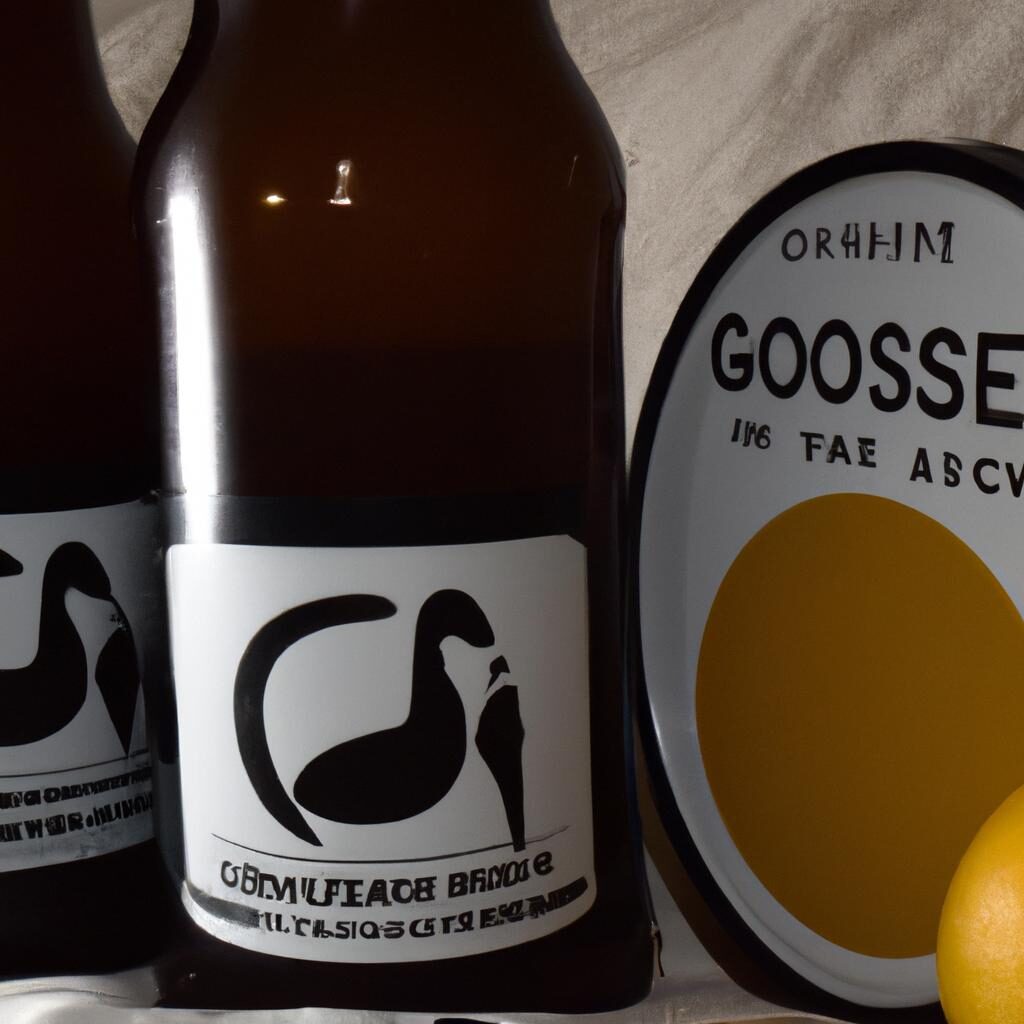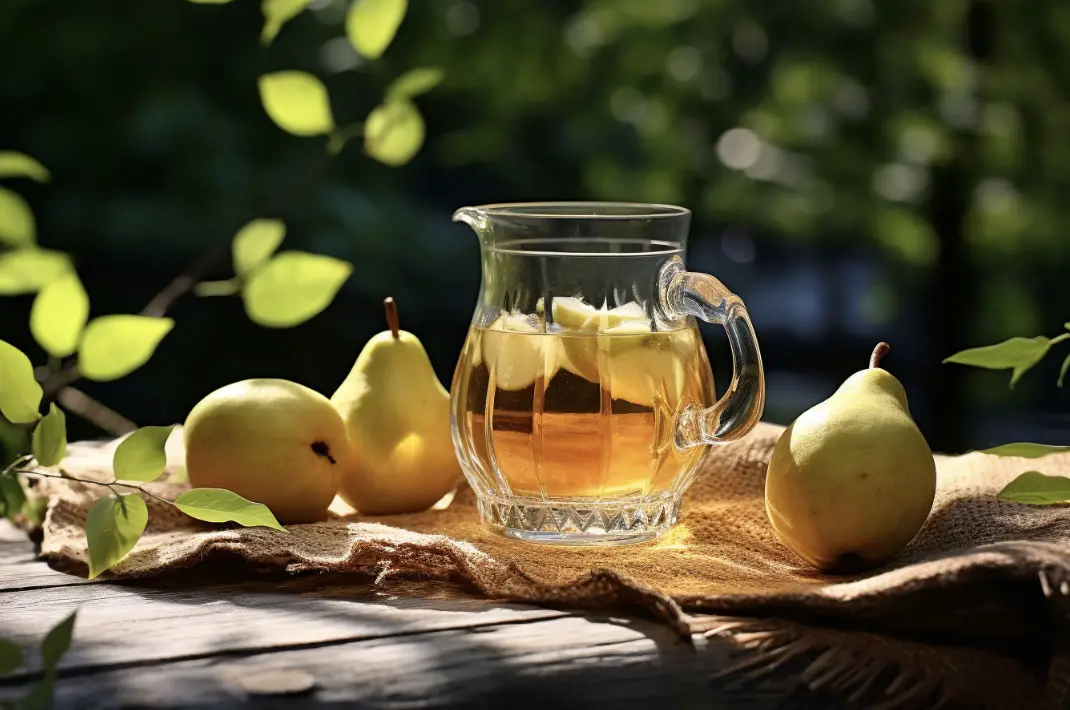Gose (pronounced “go-zuh”) is a sour, salty, and often fruity beer that has been steadily gaining popularity in recent years.
With its unique combination of flavors, many beer enthusiasts find themselves asking the age-old question: is Gose an ale or a lager beer? Well, it’s time to settle the debate once and for all.
Gose is classified as an ale, specifically a top-fermented beer, due to its use of ale yeast strains.
Now that we’ve cleared that up, let’s dive deeper into the fascinating world of Gose and explore its history, brewing process, and the various styles and flavor profiles you may encounter.
Let’s dive into the world of Gose and explore why they are considered ales and not lagers.
Ale vs. Lager: The Basics
To better understand why Gose is classified as an ale, it’s important to know the fundamental differences between ales and lagers.

The primary distinction between these two types of beers lies in the yeast strains used during fermentation:
– Ales are brewed with top-fermenting yeast (Saccharomyces cerevisiae), which ferments at warmer temperatures and produces a variety of fruity, spicy, and complex flavors.
– Lagers are brewed with bottom-fermenting yeast (Saccharomyces pastorianus), which ferments at colder temperatures and produces cleaner, crisper flavors with fewer esters and aromatic compounds.
The Origins of Gose
Gose has a fascinating history that dates back to the early 16th century in the town of Goslar, Germany. The beer is named after the Gose River, which provided the water for its original production.
The river’s high mineral content contributed to the beer’s distinct flavor profile. Over time, Gose production shifted to Leipzig, where it became a popular regional specialty.
Gose nearly disappeared from the beer landscape during World War II, as many breweries were destroyed or repurposed for other industries. However, in the early 21st century, Gose saw a resurgence in popularity, particularly in the United States, where craft brewers began experimenting with this unique beer style.
Gose’s Unique Ingredients
What sets Gose apart from other beer styles is its use of unusual ingredients. Traditional Gose recipes include:
– Pilsner and wheat malt
– Coriander
– Salt
– Lactic acid bacteria
The combination of these ingredients creates a beer that has a slightly sour, salty, and savory taste, which can be quite surprising and refreshing to the palate.

The Brewing Process
Similar to other ales, Gose is brewed using top-fermenting yeast. This means that the yeast ferments at warmer temperatures, which typically results in a faster fermentation process and the production of fruity esters and other aromatic compounds.
Gose’s unique sourness comes from the addition of lactic acid bacteria during the brewing process. This bacteria ferments sugars in the wort, producing lactic acid and creating a tart and tangy flavor.
Gose vs. Other Sour Beers
Although Gose is a sour beer, it should not be confused with other sour beer styles such as Berliner Weisse or lambics. While all three are characterized by their sourness, they each have unique flavor profiles and brewing processes.
Berliner Weisse is a low-alcohol, sour wheat beer that is often served with raspberry or woodruff syrup to balance its tartness. Lambic beers are spontaneously fermented with wild yeast and bacteria, which creates a complex, funky, and sour flavor profile.
Gose, on the other hand, is known for its salty and slightly fruity characteristics, in addition to its sourness. It is also brewed with a higher proportion of malted wheat compared to other sour beers.
A World of Ale Styles
Gose is just one example of the diverse world of ale styles. Some other popular ale styles include:
– Pale Ale: A hop-forward beer with moderate strength and a balanced malt profile.
– IPA (India Pale Ale): A more aggressive, hoppy beer with higher alcohol content and a strong bitterness.
– Stout: A dark, roasty beer with flavors of chocolate, coffee, and caramel.
– Belgian Dubbel: A rich, malty beer with dark fruit flavors and a hint of spice.
Traditional vs. Modern Gose
Traditional Gose is characterized by its sour, salty, and slightly fruity flavor profile. It is typically brewed with a combination of malted barley and wheat, which contributes to its cloudy appearance and light body. Coriander is added to provide a subtle citrusy and spicy note, while the salt enhances the beer’s overall flavor.
In recent years, modern craft brewers have begun experimenting with Gose, adding their own unique twists to the traditional style.
Fruits like raspberries, cherries, or passionfruit are often added during the brewing process to create a fruity and refreshing version of the classic Gose. Other brewers may incorporate spices, herbs, or even additional souring agents to create their own unique interpretation of this historic beer style.
Gose Variations and Modern Twists
As Gose has experienced a resurgence in popularity, many modern breweries have put their unique spin on the classic style. Some popular Gose variations include:
– Fruit-infused Gose: The addition of fruits like raspberries, blackberries, or passionfruit can add an extra layer of tartness and complexity to the beer.
– Dry-hopped Gose: Hops with fruity, citrusy, or herbal characteristics can enhance the beer’s aroma and add a subtle bitterness.
– Barrel-aged Gose: Aging the beer in wine or spirit barrels can impart unique flavors and a touch of oakiness.

Good Gose Food Pairings
Gose’s combination of sour, salty, and fruity flavors makes it a versatile beer for food pairings. Its acidity can help cut through rich, fatty dishes, while its saltiness can enhance the flavors of more delicate dishes.
Here are a few food pairing suggestions:
- Seafood: The saltiness of Gose complements shellfish and other seafood dishes, while the acidity helps to cleanse the palate.
- Grilled meats: Gose’s acidity can help to balance the smoky flavors in grilled meats, making it a refreshing choice for summer cookouts.
- Soft cheeses: The beer’s acidity and saltiness can help to accentuate the flavors of soft, creamy cheeses like Brie or Camembert.
- Salads: Gose’s fruity and tart qualities make it a great pairing for fresh, bright salads with citrus or vinaigrette dressings.
- Desserts: For a unique dessert pairing, try Gose with a tangy, fruit-based dessert like a lemon or raspberry tart.
Finding and Enjoying Gose
While Gose may not be as widely available as other beer styles, its popularity is growing, and many craft breweries are now producing their own versions. To find Gose, check your local craft beer stores, bars, and breweries. When tasting Gose, remember to embrace its unique flavor profile and explore the various modern interpretations of this ancient brew.
Popular Gose Breweries and Beers
As Gose has grown in popularity, many craft breweries have begun producing their own versions of this unique beer style. Some popular Gose breweries and beers include:
- Westbrook Brewing Co. (South Carolina) – Westbrook Gose
- Anderson Valley Brewing Co. (California) – The Kimmie, The Yink, and The Holy Gose
- Victory Brewing Co. (Pennsylvania) – Sour Monkey
- Dogfish Head Craft Brewery (Delaware) – SeaQuench Ale
- Rügener Insel-Brauerei (Germany) – Insel Kreide
Brewing Your Own Gose
For those interested in brewing their own Gose, there are many resources available, including online recipes and homebrewing forums.
Brewing your own Gose beer can be a fun and rewarding experience. Here’s a basic recipe and instructions to get you started:
Ingredients:
- 6.6 lbs Wheat Malt Extract
- 2 lbs Pilsner Malt
- 1 lb Acidulated Malt
- 1 oz Hallertauer hops
- 1 oz Salt (sea salt or pink Himalayan salt)
- 0.5 oz Coriander seeds
- Wyeast 1007 German Ale yeast
- Water
Instructions:
- Crush the Pilsner Malt and Acidulated Malt and place them in a muslin bag.
- Heat 1.5 gallons of water in a large pot until it reaches 155°F.
- Add the muslin bag to the pot and let it steep for 30 minutes.
- Remove the muslin bag and add the Wheat Malt Extract to the pot. Stir until it dissolves.
- Bring the mixture to a boil and add the Hallertauer hops. Boil for 60 minutes.
- Add the salt and coriander seeds during the last 5 minutes of the boil.
- Chill the mixture to 70-75°F.
- Transfer the mixture to a fermenter and add the yeast.
- Allow the beer to ferment for about a week or two, until the gravity stabilizes.
- Bottle or keg the beer and carbonate to your desired level.
Note: Gose beers traditionally have a sour taste, which is achieved by adding lactic acid bacteria during the brewing process. If you want to add a sour flavor to your Gose, you can try using a Lactobacillus culture or adding some acidulated malt after the mash.
Remember to source quality ingredients and pay close attention to your fermentation temperatures to ensure the proper development of the beer’s characteristic tartness and complexity.
Conclusion:
Gose is an ale beer, and its unique combination of sour, salty, and savory flavors sets it apart from other beer styles.
As an ancient brew with a fascinating history, Gose has experienced a resurgence in popularity, leading to a wide range of modern variations and interpretations. Embrace the unique flavors of Gose and explore its versatility in food pairings and brewing adventures.
Heres a sum-up:
1. Gose originated in the town of Goslar, Germany in the early 16th century.
2. The beer is named after the Gose River, which provided the water for its original production.
3. Gose’s unique flavor profile comes from the use of coriander, salt, and lactic acid bacteria.
4. Gose is an ale beer, brewed using top-fermenting yeast.
5. The style almost disappeared in the 20th century, but has experienced a resurgence in recent years.
6. Many modern breweries now produce their own versions of Gose, often with unique twists and variations.
7. Gose can be a versatile beer for food pairings, particularly with seafood, salads, and soft cheeses.
8. The beer’s sourness comes from the addition of lactic acid bacteria during the brewing process.
9. Gose is typically low in alcohol, with most examples ranging between 4% and 5% ABV.
10. The style is gaining popularity worldwide, with craft breweries in the United States, Canada, and beyond producing their own interpretations of Gose.
FAQs
Are all sour beers ale?
Yes, sour beers are typically ales.
Is gose a lager or an ale?
Gose is technically an ale, but it is brewed with lager-like techniques and often fermented at cooler temperatures.
What kind of beer is a gose?
Gose is a sour, salty beer style that originated in Germany and typically includes coriander and wheat in its recipe.
Are gose and sour beers the same?
No, gose and sour beers are not the same. Gose is a specific style of beer that typically includes the addition of salt and coriander, while sour beers can come in a variety of styles and flavors, but are generally characterized by their tartness.
What is the difference between sour ale and beer?
Sour ale is a type of beer that has a tart or acidic taste, often achieved through the use of wild yeast or bacteria during fermentation. Therefore, all sour ales are technically beer, but not all beer is sour ale.
What makes a sour ale?
Sour ales are typically made by intentionally introducing bacteria, such as lactobacillus or pediococcus, during the brewing process. These bacteria produce lactic acid, which gives the beer its sour taste. Additionally, some sour ales may be aged in oak barrels or have fruit added to them, which can also contribute to their tartness.





